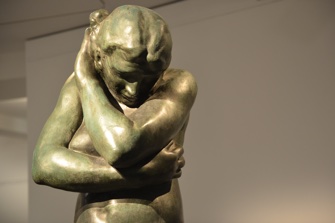
The small town of Yerres, about an hour from Paris, would seem to be an unlikely place for a major exhibition covering a century and a half of sculpture and including greats of the past like Auguste Rodin, Antoine Bourdelle, Alberto Giacometti and Germaine Richier as well as many talents of the present.
The Biennale de Sculptures is held on the former estate of painter Gustave Caillebotte, with its large park dotted with follies, including a tiny chapel and an ingenious “deep freeze” dug into the earth long before refrigeration existed.
A pleasant stroll around the park takes visitors past the larger sculptures. Off in the distance on a grassy knoll is Jaume Piensa’s “Isabella” (2015), the head of a woman in cast iron. From far away it looks three-dimensional, but if you approach and walk around it, you will see
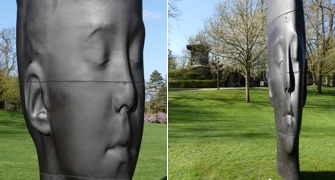
that it is almost flat, with the features skewed to offer an illusion of realism from any angle.
Straddling the river that runs through the park (where the Caillebotte family practiced rowing) is “Fight Club” (2011) by Kasia Ozga, three massive forearms with the hands clasped together, probably for an arm-wrestling match rather than in friendship, given the title.
I was especially drawn to another massive piece, Denis Monfleur’s powerful “Le Grand Assis” (2013), a roughly carved head and torso in Chambois basalt, strangely affecting even though the face is blank.
Less monumental and more in tune with the natural setting were two works by Florence de Ponthaud, whose site-specific works, “Aux Aguets” and “Oiseau Comète” are made from tree branches and other natural elements. The former looks like a monstrous insect waiting for its prey on a mound of earth, while the latter, a bird made of branches hovering in a tree above its rough “nest,” blends subtly into its setting.
A few works are on show in the Orangerie in the park, most dramatically Alain Séchas’s monumental “Centaure Mourant” (2008), a
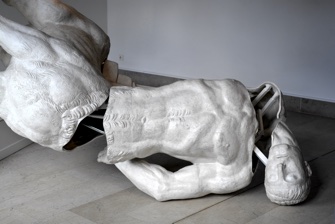
copy in plastic of a monumental work of the same name by Bourdelle, with a big difference. From time to time, this robotized version comes to life, and the half-man, half-horse unfolds and collapses to the ground, no longer dying but dead.
In the same room are much quieter pieces by young artists Léa Klein, who works with fabric, and Ana Maria Lozana Rivera, whose hanging
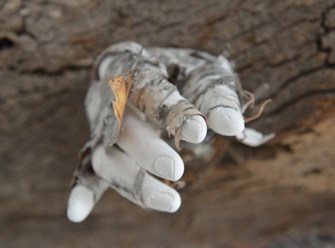
Indoors, the highly varied exhibits range from an instantly recognizable sculpture by Dubuffet painted in red, white and blue to a poetic bronze piece by Marie-Noëlle de la Poype, “Moby Dick II,” which is easy to imagine as a fossilized bone from the nemesis of Captain Ahab himself.
Pascal Convert’s “Three Angels of the Abbey of Saint Gildas des Bois,” encases the three white
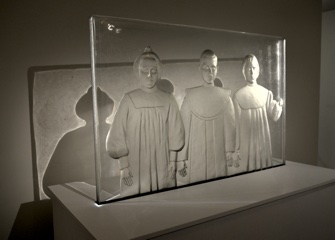
angels in crystal, casting mysterious shadows on the wall behind them.
This survey of a century and a half of sculpture in a green setting is a great excuse for a daytrip from Paris. Try not to miss it.
Favorite
